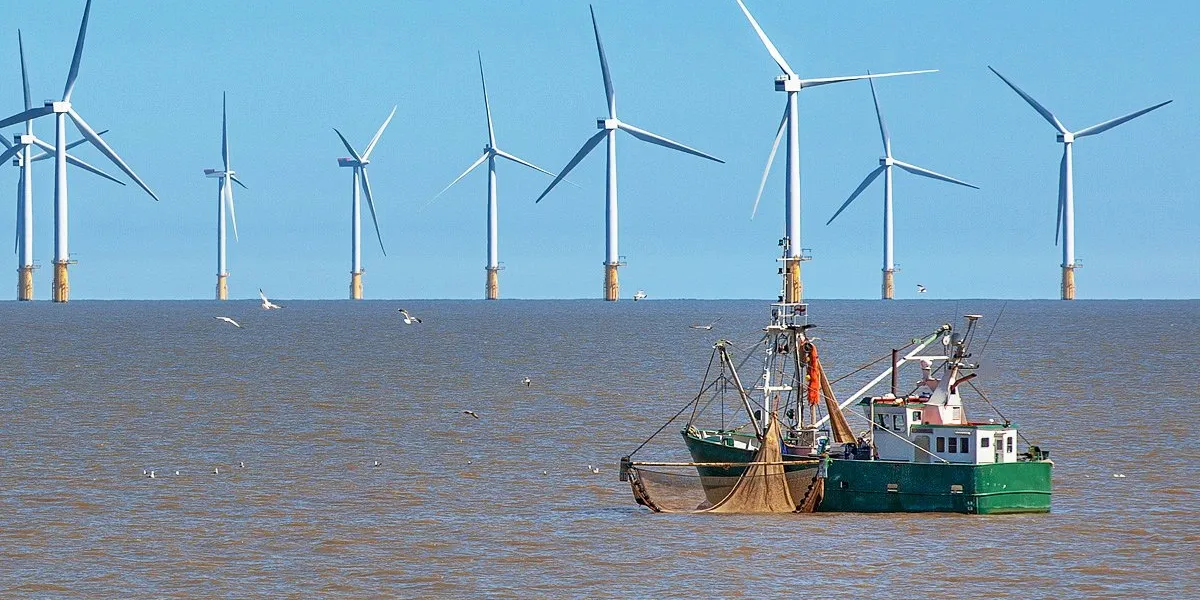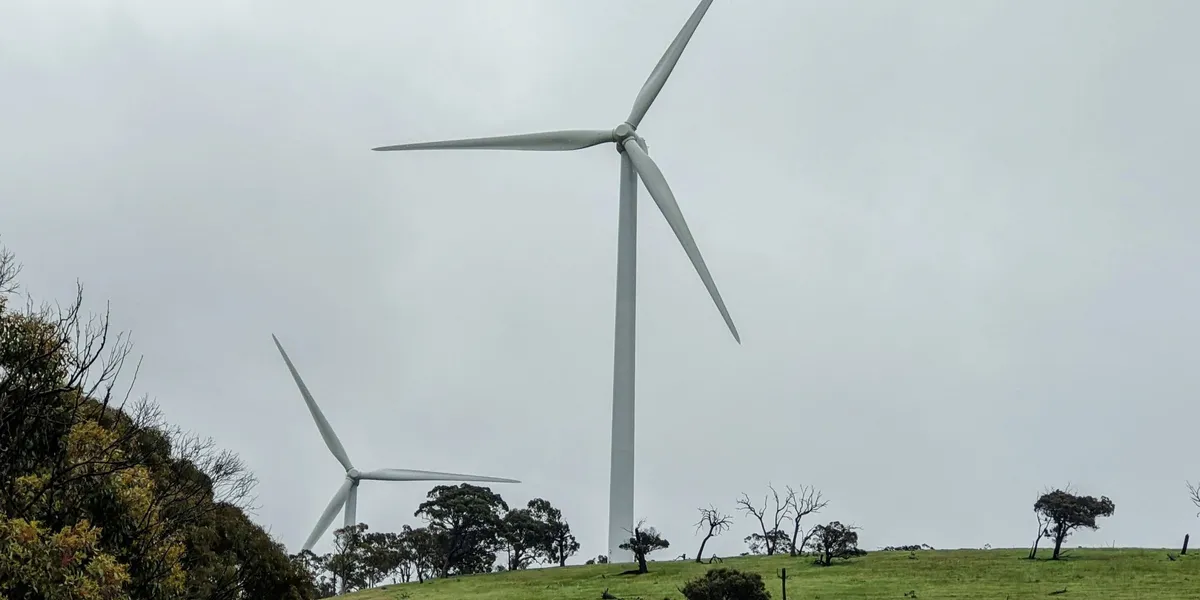
I apologize to the Powers That Be for my lack of content velocity this week. I didn’t gamble a single cent or pay for a sip of a drink, but the trip out to Las Vegas for RE+ completely wiped me out.
The long flights and days spent shuffling around the Venetian and Caesar’s Forum were well worth it, though, and as I shamble back into the saddle and transcribe quotes from the event, I’m picking up on some prominent themes. The prevalent one is optimistic: the tailwind of increasing electricity demand is strong enough to ensure the U.S. renewable energy industry survives and thrives, despite headwinds from the federal government.
Kevin Smith, CEO of independent power producer (IPP) Arevon, put it succinctly.
“Solar and battery storage are best positioned, with or without tax credits,” he told me. “And the industry feels that because projects are still continuing to move forward, there’s still demand from utilities.”
Smith anticipates a more acute supply vs. demand situation to emerge in late 2026 and into 2027; keep your eyes on Factor This for more on that in a future article.
In the meantime, here’s a 2,000-word testament, in black and white, to Smith’s sentiments. If you want to see a particular project or financing appear in this column, send it my way. In the meantime, be good to one another, and when the weekend finds you, may you bask in its warmth like a comforter fresh out of the dryer.
Catalyze Brings Community Solar Online in New York
This week, fully-integrated distributed renewable energy asset developer and IPP Catalyze announced the completion of four community solar projects in central and western New York. The projects are located in Pavilion, Phelps, Fonda, and Fabius (sounds like a cool name for a law firm!) and were developed in partnership with CS Energy. Combined, they account for 27 megawatts (MW) of capacity.
According to Catalyze, the projects leveraged standardized design, a consistent racking system, and trusted subcontractor relationships, allowing teams to accelerate schedules and bring power online as fast as possible. Construction access and laydown areas were carefully managed so that farmland could return to its pre-existing condition, allowing landowners to continue farming outside the solar arrays. The installations, built with prevailing wage labor, were supported by New York State programs including the Inclusive Community Solar Adder and the Community Adder, which help ensure reliable energy access to low-to-moderate income (LMI) subscribers and disadvantaged communities.
“Our work with CS Energy shows what’s possible when states, developers, and communities align,” said Andrew D’Amico, Chief Operating Officer at Catalyze. “This milestone is about more than megawatts; it’s about taking action. We are seeing businesses move fast to lock in the long-term benefits and cost advantages of solar power while federal tax credits are still in place, with states offering incentives designed to expand access.”


The timing of these projects, as D’Amico points out, highlights the importance of acting quickly to secure federal tax incentives while they’re still around. Current solar investment tax credits cover 30% of project costs, with potential bonuses of 10% for domestic content and an additional 10% for projects in designated energy communities.
This marks the halfway point of an eight-project collaboration between Catalyze and CS Energy. The remaining projects, totaling more than 25 MW, are scheduled for completion over the next year. Last October, New York reached its goal of installing 6 gigawatts (GW) of distributed solar ahead of schedule.
Enel Signs Largest-Ever Power Purchase Agreement
Enel North America is going to Mars! Or rather, Mars is coming to Enel… for power.
Late last week, Enel signed three power purchase agreements (PPAs) for the full output of a trio of Texas solar farms with Mars Incorporated (yes, the candy bar company). The deals represent Enel’s largest corporate PPA transaction worldwide. Combined, the agreements represent 851 MWac and are expected to yield 1.8 terawatt-hours of electricity each year.
Vegetation at all three sites will be managed through sheep grazing, a sustainable dual-use solar practice that Enel expanded through the largest solar grazing agreement signed in the United States. Learn more about that deal and check out cute sheep pics here:
“This deal reinforces our commitment to decarbonization and shows how renewables are among the fastest and most affordable solutions to meet the nation’s energy needs. Through these agreements, we’re adding clean capacity to the Texas grid while supporting a leading manufacturer’s sustainability goals,” said Michele Di Murro, CEO of Enel North America.
“Many large companies are well on their way to sourcing renewable electricity for their own operations, but that’s just a part of the picture,” added Kevin Rabinovitch, Global VP Sustainability at Mars. “For Mars, Renewable Acceleration is a performance accelerator, cutting emissions at a scale and speed we could never achieve through traditional value chain engagement approaches. It lets us bring demand for all the electricity used in our value chain to the clean energy market in a highly efficient manner. The more demand we create together, the faster we can build the future we all want. And clean energy means cleaner air for our communities, our people, our partners.”
Fourth Power Secures $20M for Utility-Scale Storage Solution
Startup flexible-duration energy storage provider Fourth Power has secured $20 million in Series A Plus funding led by Munich Re Ventures, with follow-on investments from DCVC and Breakthrough Energy Ventures.
The funding will accelerate the commercial deployment of Fourth Power’s modular, utility-scale thermal energy storage system, supporting the commissioning of an integrated 1 MWh-e demonstration using full-scale commercial components, the company’s final step before customer deployments. Fourth Power also intends to use the influx of capital to deepen partnerships with suppliers and customers further and grow its customer pipeline.
“We’re in a race between the growing need for reliable electricity and the grid’s ability to provide it quickly and affordably. Existing solutions are too slow to deploy, too expensive for customers, and oftentimes both,” argued Arvin Ganesan, CEO of Fourth Power. “Fourth Power offers a new path forward: scalable, flexible-duration energy storage built from abundant domestic materials. It’s how we deliver reliability at a price point that works—for energy providers, their customers, and the future of the grid.”
Since its $19 million Series A in 2023, Fourth Power has doubled its team size and claims it has achieved breakthrough engineering milestones that validate its commercial readiness. The company constructed three large-scale, accelerated life test rigs to validate the durability, safety, and lifetime performance of its subsystems at temperatures up to 2400°C. Further advances include demonstrating a self-lubricating graphite pump for moving molten tin, high-pressure-rated graphite fittings for liquid metal containment, and a scalable inert gas enclosure system.
“Fourth Power is solving a grid problem that’s very real and very near-term, and they’re doing it with a system that’s safer, cheaper, and dramatically more scalable than anything we’ve seen in this category,” stated Peter Ortez, principal at Munich Re Ventures. “We focus on companies tackling the biggest risks facing society. And we believe Fourth Power’s approach represents exactly the kind of resilient infrastructure investment the energy transition demands.”
The Northeast faces distinct challenges, including transportation electrification, aging infrastructure, renewable integration, grid modernization, and increasingly severe weather. DTECH® Northeast will assemble leading stakeholders to tackle these issues head-on, offering insights into cutting-edge technologies and strategies that ensure reliability, sustainability, and customer satisfaction. Join us in Boston, Massachusetts, from November 17-19, 2025!
Fourth Power’s thermal energy storage system works by converting electricity into heat using 2400°C liquid metal as a heat transfer fluid. It stores that energy in carbon blocks and converts it back to electricity using proprietary thermophotovoltaics (TPVs). The company’s use of very high-temperature liquid metal for heat transfer achieves high power density, reducing overall system costs. Fourth Power’s modular design separates power and energy, allowing utilities to add storage duration over time as needs change at just a fraction of the initial installation cost. This flexibility, which the company says is enabled by storage costs of less than $25/kWh-e, allows customers to “grow with the grid,” a key differentiator from lithium-ion batteries, where adding duration means duplicating the entire system.
“This technology doesn’t just incrementally improve on existing solutions, but completely reimagines how we approach the problem,” said Carmichael Roberts of Breakthrough Energy Ventures. “With energy demand rising rapidly, we need storage technologies that can scale cost-effectively alongside that growth. Fourth Power’s flexible-duration approach is that kind of infrastructure-grade solution.”
Fourth Power expects to announce its first commercial partnerships by 2027.
Jupiter Power Brings Michigan’s First Utility-Scale Battery Online
On Wednesday, Texas-based Jupiter Power and Michigan utility Consumers Energy hosted a ribbon-cutting ceremony celebrating the successful commercial operations of the Tibbits Energy Storage Facility, the first-of-its-size operational battery energy storage system (BESS) in the mitten state. The 100 MW, four-hour duration BESS is located in Coldwater Township.
In June 2024, Consumers Energy announced a long-term agreement to purchase 100 MW of capacity from the Tibbits facility to be built and operated by Jupiter Power. The project went online earlier this summer and is the first of several large-scale battery projects that Consumers Energy has in the works this decade.
“Jupiter is proud to have completed Michigan’s first utility-scale energy storage project, which will increase Consumers Energy’s supply of reliable, flexible energy solutions to meet customer needs and also bring many benefits to the Coldwater community,” said Jack Godshall, Chief Commercial Officer of Jupiter Power. “Tibbits puts Jupiter’s total battery storage projects now in operation or under construction at nearly 3GWh, and with more than 12GW of new projects in development, we have much more to do – including in Michigan.”
Jupiter Power is also advancing the proposed 100 MW Voyager Battery Storage project in Saline Township, supported by a long-term power purchase agreement with Consumers Energy.
Nexamp Attracts $350M for First Utility-Scale Projects
Nexamp, the largest community solar and commercial-scale distributed generation owner in the United States, has secured $350 million in financing from Macquarie Asset Management to support the construction of its first utility-scale solar and battery storage projects. In a separate transaction, the company also raised additional development capital from Nomura to advance earlier-stage projects and sustain a national pipeline of utility-scale opportunities.


The Macquarie deal is more about Nexamp’s near-term construction plans. It will enable Nexamp to advance a significant portion of its 6 GW pipeline, which has been under development since the company’s expansion into the utility-scale segment in 2021. According to Nexamp, the Nomura investment complements this structure by supplying flexible capital to support the development activities of its next tranche of utility-scale projects.
“Access to capital across both development and construction is essential for building the scale of projects that today’s energy market demands,” said Zaid Ashai, Chairman and CEO of Nexamp. “These financings, secured from two world-class partners, ensure that Nexamp can both deliver on the near-term buildout of utility-scale solar and storage and invest in the development pipeline that will power the next phase of growth. This is about building a durable platform that meets the country’s rising demand for easy-to-deploy, more affordable energy.”
Macquarie’s financing will facilitate the construction of more than 1 GW (AC) of solar and storage projects across the high-demand MISO, ERCOT, and NYISO markets, while Nomura’s capital will advance development activities in MISO, NYISO, and PJM, three of the nation’s fastest-growing regions for utility-scale renewables. PEI Global Partners served as financial advisor to Nexamp on both transactions.
Sol Systems Scores $80M for Project Pipeline
Growing IPP Sol Systems has announced an initial commitment from Great Bay Renewables (GBR) of approximately $80 million in interconnection letters of credit (LCs) supporting Sol’s MISO portfolio. The revolving facility will be used to post refundable milestone deposits to MISO and, subsequently, to support readiness deposits in PJM.
“Interconnection is a bottleneck for U.S. clean energy deployment,” noted Richard Romero, Chief Financial Officer of Sol Systems. “This facility lets us scale more efficiently by posting deposits with letters of credit rather than cash, so we can advance a broader, de-risked portfolio for our customers and capital partners. Great Bay Renewables understands today’s queue realities and structured a solution that meets the moment.”
Non-cash-collateralized LC capacity has historically been reserved for large, credit-rated platforms. By partnering with GBR, Sol gains balance-sheet efficiency comparable to the industry’s most prominent players while continuing to invest in rigorous upfront engineering and site selectivity. This non-cash-collateralized LC capacity enables Sol to advance a greater number of high-quality interconnection positions without tying up cash, supporting a larger, more diversified pipeline, and accelerating deployment as projects mature.
“The capital required for grid interconnection security is one of the largest impediments to energy project development,” added Frank Getman, CEO of Great Bay Renewables. “At Great Bay, we specialize in creating innovative financial solutions to solve these complex problems. Our interconnection financing frees up our partners’ balance sheets, enabling companies like Sol Systems to deploy their resources efficiently to build the projects that accelerate the growth of American industry.”








